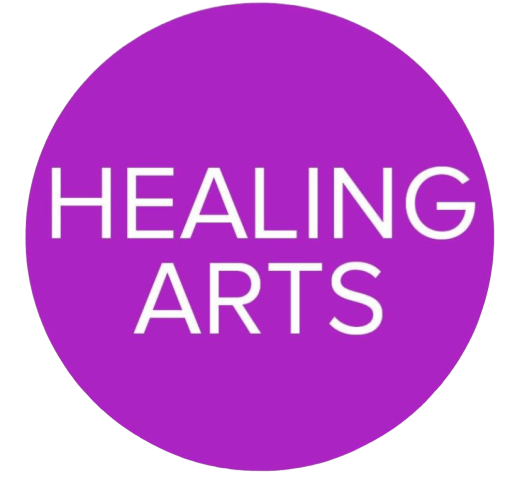Grounding with Nature for Healing and Well-Being
Grounding is a healing modality that encourages us to slow down, tune into our senses, and reconnect with the healing power of nature.
-Dr. Alicia Armitstead
We live in a world where most of us spend the majority of our time indoors, disconnected from the natural world that has supported human life for thousands of years. This disconnection from nature can contribute to feelings of stress, anxiety, and unease that we experience in our day-to-day lives. One way to counteract this is through the practice of grounding, or reconnection with nature. Grounding is a healing modality that encourages us to slow down, tune into our senses, and reconnect with the healing power of nature. In this blog, I will explore the concept of grounding, how it can benefit our physical and mental health, and how to incorporate nature-based healing practices into our daily lives. If you are located in New York City, Connecticut, or nearby, please keep reading for more information on these grounding practices and where to find them!
What Is Grounding?
Grounding, also known as earthing, is the practice of connecting with the earth’s energy directly through our bare feet or other parts of our body in contact with the ground. The practice is based on the idea that the earth has a natural, negative electrical charge that can help neutralize the positive charge that builds up in our bodies from modern stressors like electronic devices, environmental toxins, and everyday living. From a scientific perspective, studies have shown that grounding can help reduce inflammation in the body, improve sleep quality, decrease stress hormones, and support immune function. On a psychological level, grounding can help us feel more present and centered, and connected to our bodies. In a world where many of us have lost touch with our natural environment, reconnecting to the earth in this way can be a powerful tool for healing on many levels.
Practices for Connecting with Nature
Reconnecting with nature can be as simple as taking a few deep breaths of fresh air or as involved as planning regular nature retreats. The key is to make these activities a regular part of our routines rather than occasional indulgences. Some easy ways to connect with nature include:
- Walking barefoot on the earth: One of the most basic forms of grounding is simply walking barefoot on grass, sand, or soil. This direct connection with the earth can help us feel more grounded and present.
- Forest bathing (Shinrin-yoku): This Japanese practice involves spending time in a forested area and mindfully engaging all of our senses. It has been shown to reduce stress, improve mood, and boost immune function.
- Gardening: Getting our hands dirty in the soil is a great way to connect with nature and experience the satisfaction of growing our own food or nurturing plants.
- Wild swimming: Swimming in natural bodies of water can be both grounding and invigorating.
- Sitting against a tree: Simply sitting against a tree and feeling its strength and stability under us can be a powerful practice for cultivating a sense of support and connection to the earth.
For those of us in the New York City area or Connecticut, there are plenty of opportunities to get in touch with nature, even if we live in urban areas. Houseplants, window boxes, or container gardens on balconies are all ways to bring nature into our homes. Visiting local parks, even if they are small or in the city, is another way to connect with nature.
For those in Connecticut, the state’s natural resources make it easy to incorporate grounding activities into our lives. Hammonasset Beach State Park, for example, offers a beautiful shoreline for walking barefoot on the beach or sitting in the water. The Appalachian Trail sections in western Connecticut provide an opportunity for immersive forest experiences. Devil’s Den Preserve in Weston is another great spot, with 1,756 acres of woodland and over 20 miles of trails. Even more developed areas of the state offer access to many state parks and town nature preserves.
Both New York City and Connecticut offer distinct seasons, and connecting with the natural world throughout the year is a beautiful way to engage with the cycles of life, from spring flowers to autumn leaves to winter snow.
The Mental and Emotional Benefits of Nature Connection
The mental and emotional benefits of connecting with nature are well-documented and profound. Research consistently shows that time spent in natural environments leads to lower cortisol levels (the stress hormone), lower blood pressure, and reduced activity in areas of the brain associated with rumination and negative thinking. Nature exposure has been linked to lower rates of anxiety, depression, and attention disorders. Beyond these more measurable benefits, nature provides us with a rare chance to practice non-judgmental awareness and presence.
In social and digital contexts, we are constantly being stimulated and evaluated, and in nature, we don’t have to be. We can relax our vigilance and access more restorative states of mind more easily. Natural environments often inspire awe, which has been shown to expand our perception of time, increase feelings of connection, and enhance overall life satisfaction. Regular nature contact also improves our ability to regulate emotions, allowing us to respond to life’s ups and downs with greater resilience and equanimity.
Nature Connection and Physical Health
The therapeutic relationship between humans and nature is deep and goes beyond relaxation or stress reduction. It is rooted in our evolutionary history and biological needs. Biophilia theory proposes that humans have an innate affinity for life and natural processes, and suggests that our well-being is dependent on connection with nature. Studies have looked at the effects of nature on health outcomes and have found improvements in immune function, cardiovascular health, and metabolic function.
Hospital patients with views of natural scenes experience faster recovery and require less pain medication than those facing brick walls, and nature therapy has been used successfully to treat a variety of conditions, from hypertension to post-traumatic stress disorder. These effects are thought to arise from several mechanisms: exposure to phytoncides (antimicrobial compounds produced by plants) can boost immune function; natural light exposure helps regulate circadian rhythms; biodiversity in the soil and plants can expose us to a wider variety of microorganisms with health-promoting properties; and sensory engagement with natural environments can trigger parasympathetic nervous system responses. These consistent findings across cultures and populations suggest that nature connection is not a luxury or a hobby, but a vital health intervention.
Grounding Practices for Modern Health Challenges
Grounding practices can support physical health in several ways, and when considered in the context of modern health challenges, offer some intriguing possibilities for prevention and treatment. Chronic inflammation is thought to be a contributor to many diseases, and direct contact with the earth may help reduce inflammation by neutralizing free radicals through electron transfer from the earth’s surface. This electrical connection to the earth may also help to normalize cortisol rhythms, which can improve sleep and reduce stress-related conditions.
Grounding practices also support embodiment, or the experience of being fully present in our physical bodies. In a culture that often values cognitive processing and virtual experiences over sensory awareness, reconnecting with our bodies through nature contact can be a powerful way to restore nervous system balance. This makes grounding a practice for both prevention and intervention, supporting baseline health and offering specific therapeutic effects for a range of conditions, from chronic pain to anxiety disorders. Integrating regular grounding practices with conventional healthcare routines can be a low-cost, accessible way to support the body’s natural healing processes.
Grounding is a powerful healing modality that allows us to reconnect with nature and tap into the deep, restorative power of the earth. By making these practices a regular part of our lives, we can cultivate a deeper sense of presence, reduce stress, and improve our overall well-being. Whether you are in the bustling streets of New York City, the rolling hills of Connecticut, or anywhere in between, there are many opportunities to connect with nature and support your health and healing.
I invite you to begin or deepen your grounding practice today, in whatever way feels possible for you. The earth is always beneath us, ready to hold and support us on our journey toward greater health and vitality.












